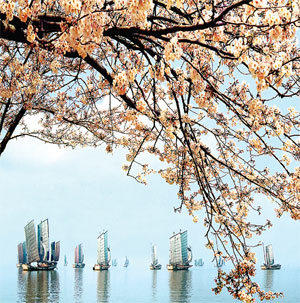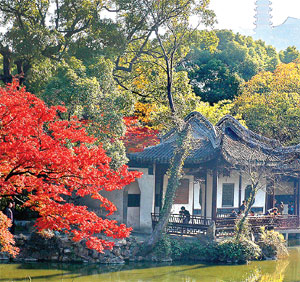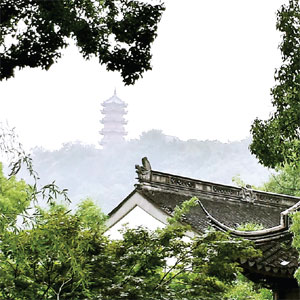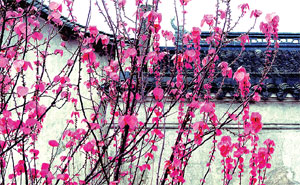From factory town to garden city
(China Daily) Updated: 2014-09-12 07:49Hills and lakes, once victims to pollution, turning green and clean
The tea gardens here are where the retirees gather and single local opera tunes.
The lavender farms are where middle-class young couples, with women in white wedding gowns, pose for French-flavored wedding shots.
They don't want to remember that the underneath used to be one of the ugliest quarries from the '70s through the '90s.
The city government of Wuxi began refilling the stone pits in Junzhang Hill in 2005, initiating Wuxi's largest ecological restoration program. The once-wounded hillsides are now repaired and are covered by lush plants.
The Changguangxi wetland, at the foot of Junzhang Hill, is another beneficiary of the government's restoration project.
The 80-hectare wetland, a canal dug during the Three Kingdom period (AD220-280) connecting Lihu Lake in the north and Taihu Lake in the south, had become seriously polluted by industrial wastewater over many decades.
Now the wetland is a 300-hectare park with hundreds of varieties of plants, fish and birds.
The 2007 blue-algae pollution crisis of the Taihu Lake, which was reported worldwide, forced Wuxi to change. The city has been central to a national cleanup action in the 2,400-square-kilometer lake, one of the largest freshwater lakes in China. Thousands of factories, many of which produced chemicals, were shut down or relocated.
Nowadays, the oxygen-sucking blue algae still affects some parts of Taihu Lake. But its harm has been decisively reduced. The central government decided earlier this year to increase its funding from 96 billion yuan to 120 billion yuan for a Taihu Lake environmental program that is supposed to meet its targets in 2020.
Wuxi is already receiving benefits from its once-again green hills and clear waters.
Wuxi's tourism authority estimates that tourist revenue is already more than the government's input into restoring the environment.
But Wuxi has new concerns. The chemical fertilizers and pesticides used in agriculture continue to threaten the soil and water.
Environmental protection is an ever-lasting cause. The city will have to fight the traditional agricultural pollution on one hand and the modern pollution from tourism on the other.




- Govt encourages people to work 4.5 days a week
- Action to be taken as HIV cases among students rise
- Debate grows over reproductive rights
- Country's first bishop ordained in 3 years
- China builds Tibetan Buddhism academy in Chengdu
- Authorities require reporting of HIV infections at schools
- Typhoon Soudelor kills 14 in East China
- Police crack down on overseas gambling site
- Debate over death penalty for child traffickers goes on
- Beijing to tighten mail security for war anniversary







